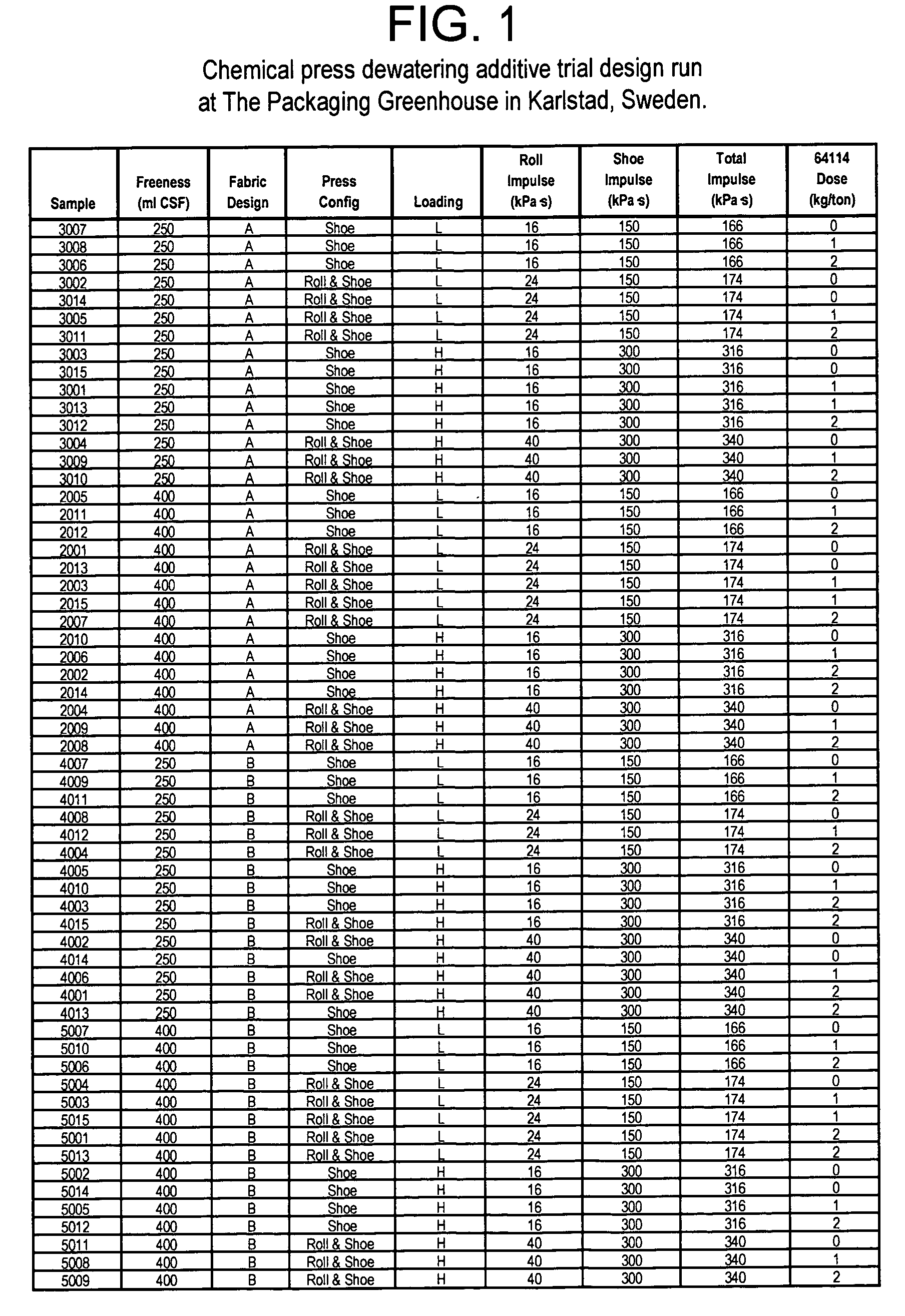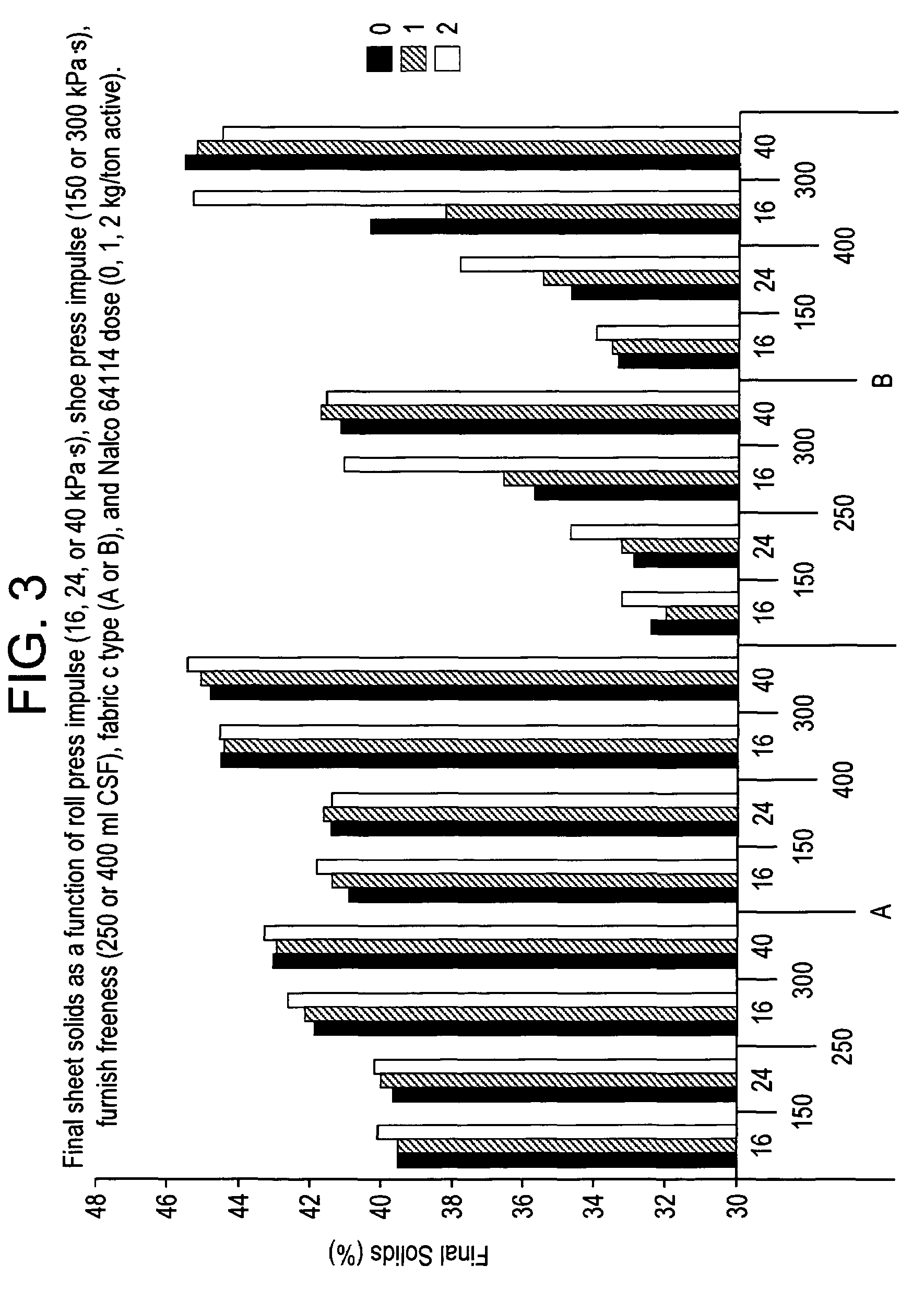Method of operating a papermaking process
a papermaking process and papermaking technology, applied in the press section, non-fibrous pulp addition, instruments, etc., can solve the problems of increasing the solid content exiting the press section, and affecting the efficiency of the press
- Summary
- Abstract
- Description
- Claims
- Application Information
AI Technical Summary
Benefits of technology
Problems solved by technology
Method used
Image
Examples
example
[0061]A press section trial on a pilot paper machine was conducted at The Packaging Greenhouse in Karlstad, Sweden. The objective of the trial was to determine the effects of press media structure, press configuration, stock freeness, press mechanical load, and Nalco 64114 (glyoxylated DADMAC / AcAm polymer available from Nalco Company, Naperville, Ill. USA) dose on sheet dryness out of the press section. The trial was a full factorial design with five factors. Four of the factors had two levels and the fifth, chemical additive dose, had three levels. The factors and levels were:[0062]1. Press configuration (shoe press alone or roll press followed by shoe press).[0063]2. Press load (low level—120 kN / m in roll press; 750 kN / m in shoe press; or high level—200 kN / m in roll press and 1500 kN / m in shoe press).[0064]3. Press media design (A: MFP size=30 μm, B: MFP size=15 μm).[0065]4. Freeness (low=250 ml CSF or high=400 ml CSF).[0066]5. Nalco 64114 Dose (0, 1, or 2 kg / ton based on solids)....
PUM
| Property | Measurement | Unit |
|---|---|---|
| speed | aaaaa | aaaaa |
| pressure | aaaaa | aaaaa |
| Mean Flow Pore | aaaaa | aaaaa |
Abstract
Description
Claims
Application Information
 Login to View More
Login to View More - R&D
- Intellectual Property
- Life Sciences
- Materials
- Tech Scout
- Unparalleled Data Quality
- Higher Quality Content
- 60% Fewer Hallucinations
Browse by: Latest US Patents, China's latest patents, Technical Efficacy Thesaurus, Application Domain, Technology Topic, Popular Technical Reports.
© 2025 PatSnap. All rights reserved.Legal|Privacy policy|Modern Slavery Act Transparency Statement|Sitemap|About US| Contact US: help@patsnap.com



